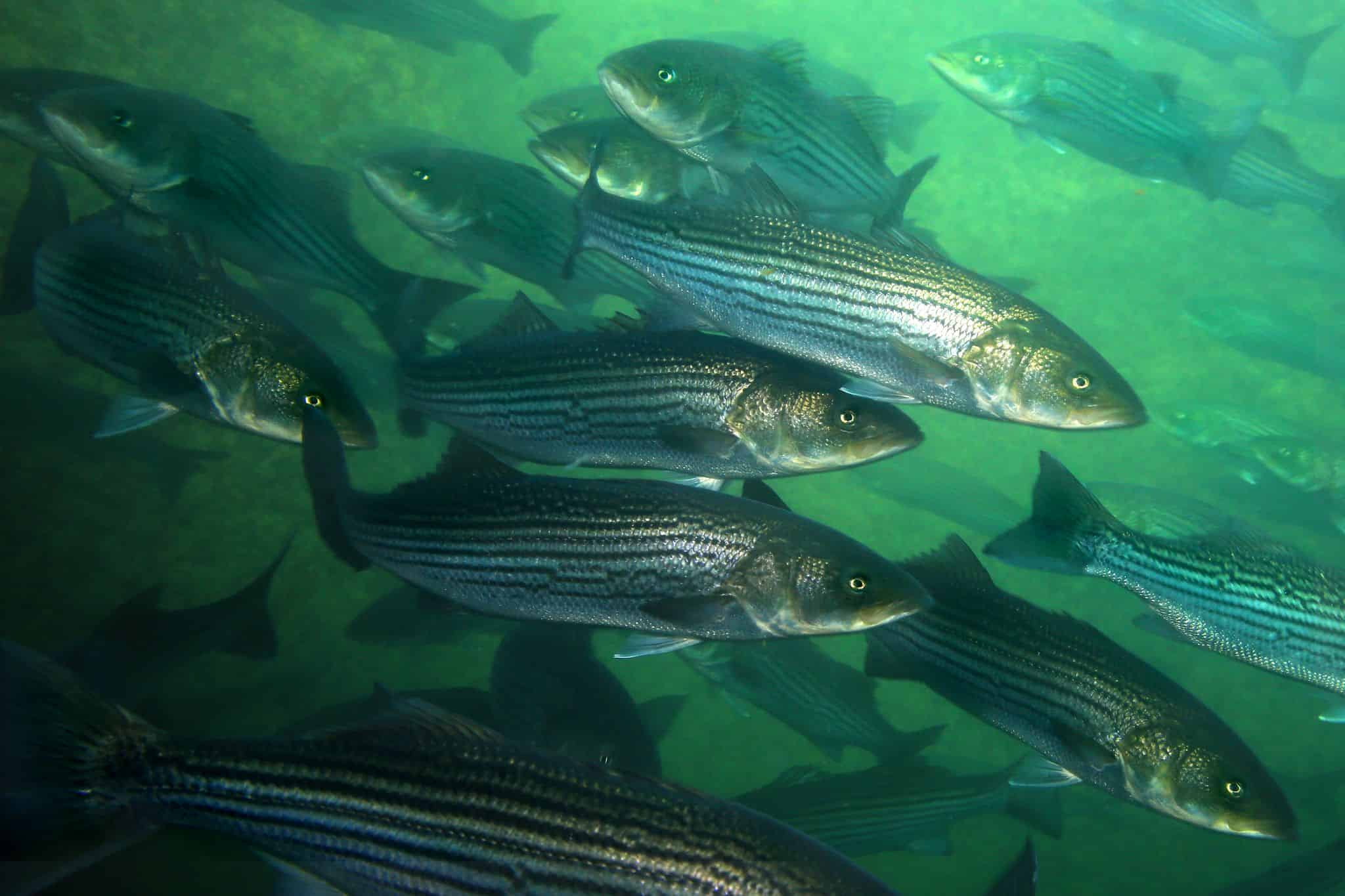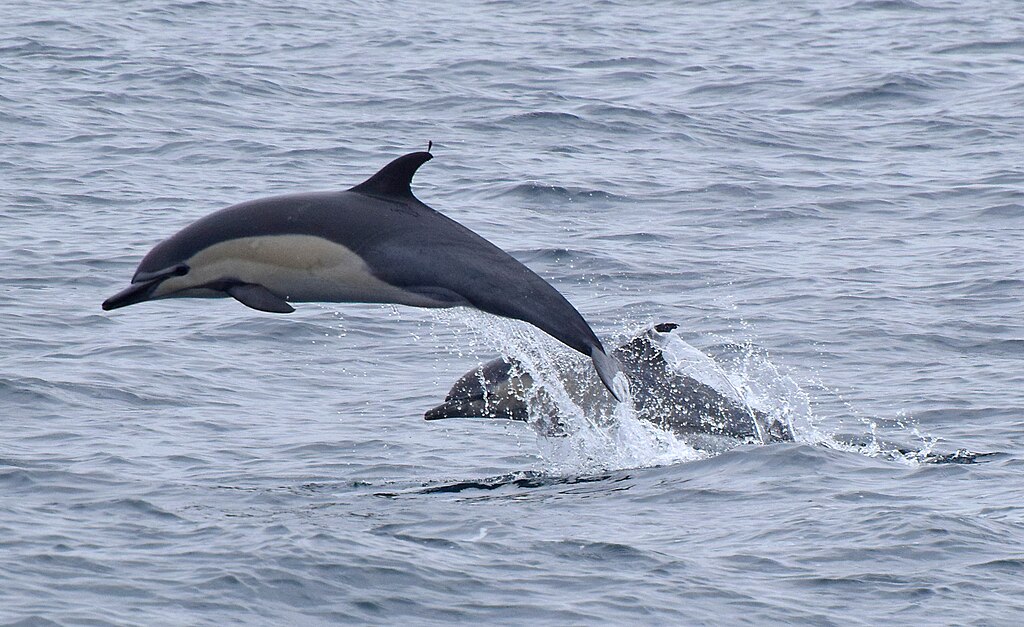A Vision of Sustainable Fishing

by Ken Hinman, President, Wild Oceans
BYCATCH IS THE NON-POINT POLLUTION OF FISHING.
That’s what I called it in an article I wrote for Salt Water Sportsman 16 years ago, to make the point that you can’t stop it simply by putting a cap on landings. It leaks from thousands of vessels at sea every day, as a consequence of indiscriminate fishing practices.
To minimize bycatch, we need to change the way we fish. Indeed, how we catch fish is often just as important as how many we catch. The collective impact of non-selective fishing is this:
- Excessive bycatch and waste, resulting in one-quarter of the global catch being discarded as unwanted, prohibited or protected species;
- An inability to effectively control fishing mortality for any single species in fisheries that opportunistically target and catch multiple species;
- Destructive impacts on marine ecosystems, including the ability of fishermen and coastal fishing communities to thrive; and,
- Disproportionate management and regulatory costs imposed on taxpayers and regional economies.
I would be among the first to acknowledge that, as a nation, we’ve made measurable progress in reducing bycatch since 2000. But it still remains a problem in a number of key fisheries – from industrial trawling for small pelagics to longlining and drift netting for large pelagics – affecting numerous vulnerable species.
Wild Oceans recently submitted comments on a Draft National Bycatch Reduction Strategy prepared by NOAA Fisheries. In those comments, we noted that our own definition of bycatch is broader than the Magnuson-Stevens Act’s definition, which focuses on economic and regulatory discards, that is, fish you don’t want or can’t keep. That narrow focus leads NOAA to lead off its Draft Strategy with an ambiguous and possibly conflicted goal statement: “(T)o reduce bycatch and bycatch mortality and to encourage utilization of discards.”
In our view, bycatch is a serious conservation and management problem in any fishery where (1) there is significant catch of unintended, unwanted or protected fish or other wildlife, and (2) there is a high level of mortality of fish at capture or post-release. Whether fish caught or killed as bycatch are kept or sold, i.e., utilized, does not necessarily obviate the need to reduce that bycatch and its unregulated impact on non-target species and other fisheries.
Conservation is Management with a Vision
The most important part of any strategy for reducing bycatch is the vision that guides it. Since the last reauthorization of the MSA 10 years ago, we have been slowly but steadily moving into a new era, from decades of reactionary, over-the-shoulder management to one where conservation takes center stage. There’s an ocean of difference between management and conservation. The way we see it, conservation is management with a vision. Without a vision of what we want the oceans, and fishing, to look like in the future, fisheries management is just rules, tools and process, all taking us – where?
With regards to bycatch, there is no question that the future must belong to safer, more selective, more sustainable fishing methods that are not only friendly to the environment, but friendlier to fishermen and fishing communities, too. Best fishing practices for conserving and managing ocean fish require transitioning fisheries away from the large-scale use of ecologically-harmful fishing gears to more selective, sustainable methods that provide an economically-feasible, low-bycatch alternative.
Best Fishing Practices
Best management practices are based on pre-determined goals, such as locally-supplied seafood, community-based employment, recreation and tourism and, in support of it all, maintaining abundant and sustainable fishery resources and a healthy environment. Although these primary goals may be social and economic, the long-term health of the resource is always the bottom line. And while each region’s specific goals and needs may be unique, best practices – namely low bycatch of non-target species, live release of incidentally-caught or undersize fish, and cost-effective monitoring and enforcement – are universal.
A national strategy to reduce bycatch should, above all else, foster ways to develop and encourage use of selective gear and transition away from indiscriminate fishing gears and methods, since these unsustainable practices are at the root of so many of our difficult and persistent fisheries management problems.
Indiscriminate fishing is not just about bycatch and bycatch is not just about the scores of species caught and killed incidentally – protected species like turtles and whales, vulnerable fish like river herring, shark, marlin and bluefin tuna. It’s also about other fishermen and lost fishing opportunities due to overfishing and waste. It’s about money; millions of dollars spent on a costly, complicated, ultimately futile maze of regulations. And, finally, it’s about time. Time spent in conference rooms in an endless series of meetings. The precious time of citizens – fishermen, scientists, academics, environmentalists – and public servants – NOAA staff and council members, who so often complain there isn’t enough time and resources to attend to other threats to the future of the oceans and fishing.
The National Bycatch Reduction Strategy should explicitly promote use of more selective fishing gears and methods with a minimal take of non-target species, gears that allow for the release and survival of non-marketable, non-target species, and methods that avoid vulnerable and protected species.
The emphasis should be on the use of actively-tended gears whenever possible. In practice, to use one example, this means providing incentives for fishermen to switch to swordfish buoy gear and tuna greenstick gear instead of deploying multi-mile longlines (on the east coast) and drift entanglement nets (on the west coast). It also means where pelagic longlines remain in the water, limiting the length of the line and soak time – so-called “short-set” longlines – so that incidentally caught fish and other wildlife do not spend hours on the line before being released, dead or dying.
Net Benefits to the Nation
Fish and other wildlife, if they belong to anyone, belong to the public. The public subsidizes destructive fishing gears by paying the high management costs – complex regulations, intensive monitoring (including observers) and enforcement – of mitigating the damage they do to non-target species and associated fisheries.
When the NOAA Strategy talks about the economic costs of bycatch, it limits the discussion to the costs borne by fishermen and the industry. But while the fishing industry may chalk up regulation as a cost of doing business, it’s the taxpayer that is really footing the bill, in effect subsidizing methods of fishing whose true costs exceed their benefits.
The public pays to conserve and manage our fisheries because there are tangible benefits, namely the privilege of being able to fish for a living or recreation, to put food on the table, and to provide jobs. But there are significant costs associated with managing fisheries. And fishing that has a high rate of bycatch, discards and waste requires substantially more management, in terms of regulations, catch monitoring and enforcement, than more selective gears.
The high costs of management can themselves directly inhibit action to reduce bycatch. In the Greater Atlantic Region, for instance, the New England and Mid-Atlantic Councils are struggling to obtain accurate estimates of bycatch, including for river herring (alewife and blueback herring, both NOAA “species of concern”), because of the high cost of developing and implementing a monitoring program for the mid-water trawl fleet.
Costs and management feasibility must be weighed against the economic return to the public – in fact, it’s required by Section 303(a)2 of the MSA that these costs be delineated – but they are rarely part of the discussion at the regional councils or NOAA Fisheries when management decisions are being made.
Performance Criteria for Allowable Gears
The Code of Conduct for Responsible Fisheries of the Food and Agriculture Organization of the United Nations was adopted 20 years ago by 80 countries, including the United States. Among other provisions, the Code calls on States to adopt measures to minimize catch of non-target species, waste, and discards that include, “to the extent practicable, the development and use of selective, environmentally safe and cost effective fishing gear and techniques”.
Today, there is increasing demand from consumers and retailers for evidence that seafood comes from “sustainable” fisheries, bringing more attention to the management of bycatch and waste in commercial fisheries.
In encouraging a transition to safer, more selective fishing practices to replace those with intractable, high-bycatch problems, the National Bycatch Reduction Strategy should set out specific protocols for conducting and evaluating research into the use of alternative fishing gears and methods.
A research and monitoring plan designed to determine how best to modify existing fishing practices and/or promote alternative ways of fishing to minimize bycatch should include the following protocols in order to effectively judge the performance of the gears in achieving our national conservation and management objectives.
Articulate the precise aims and objectives against which the gears and related research will be assessed – that is, the bycatch reduction objective and timeline for the fishery in question.
Foster transparency and stakeholder involvement in order for the public to have confidence in management decisions based on the assessments.
Test the ability of the gear to target select species. What is the ratio of target to non-target catch? For high-volume fisheries, where ratios can mask impacts to vulnerable species, will absolute bycatch removals have a negative effect on those species? Can the proposed gear/gear changes avoid non-target but marketable species that may be subject to future management? If the non-target species are subject to future regulation through quota, size limits, or prohibition, is the gear capable of minimizing catch without creating discards?
Conduct side-by-side tests of existing gears and proposed alternatives. Test actively-tended gears and how they might enhance survival of incidentally-caught fish and undersize target fish, concurrent with monitoring the effect of proposed modifications to existing fisheries with high bycatch.
Describe a process for addressing trade-offs among alternatives. For example, if a change in fishing decreases bycatch of some species but increases bycatch of others (e.g., fewer dolphin, more sharks), how will these trade-offs be treated
Weigh all the costs and benefits. If the economic feasibility of alternative gears is to be considered relevant to assessing research results, so should the management and regulatory costs associated with the gears. For instance, if catching multiple marketable species because of the non-selective nature of a gear-type is considered a positive, then the difficulty and cost of managing the fishery to avoid, regulate and/or conserve a variety of species, marketable as well as non-marketable, should be considered a negative. Likewise, “small-scale,” narrowly-targeted fisheries that carry comparatively minimal regulatory costs should be valued accordingly.
Innovative approaches to bycatch reduction exist, just as do alternative ways of fishing, provided fishermen and fishery managers have the incentive to make the needed changes. NOAA’s National Bycatch Reduction Strategy can and should play an important part in providing those incentives, as well as guiding and coordinating those changes.
Wild Oceans believes that best fishing practices for marine fisheries can support high-yield, locally-supplied fisheries, commercial as well as recreational, using the latest technological developments in sustainable fishing. It is part of a progressive shift away from so-called modern, “efficient” methods of fishing that have proven wasteful and ultimately unmanageable.




